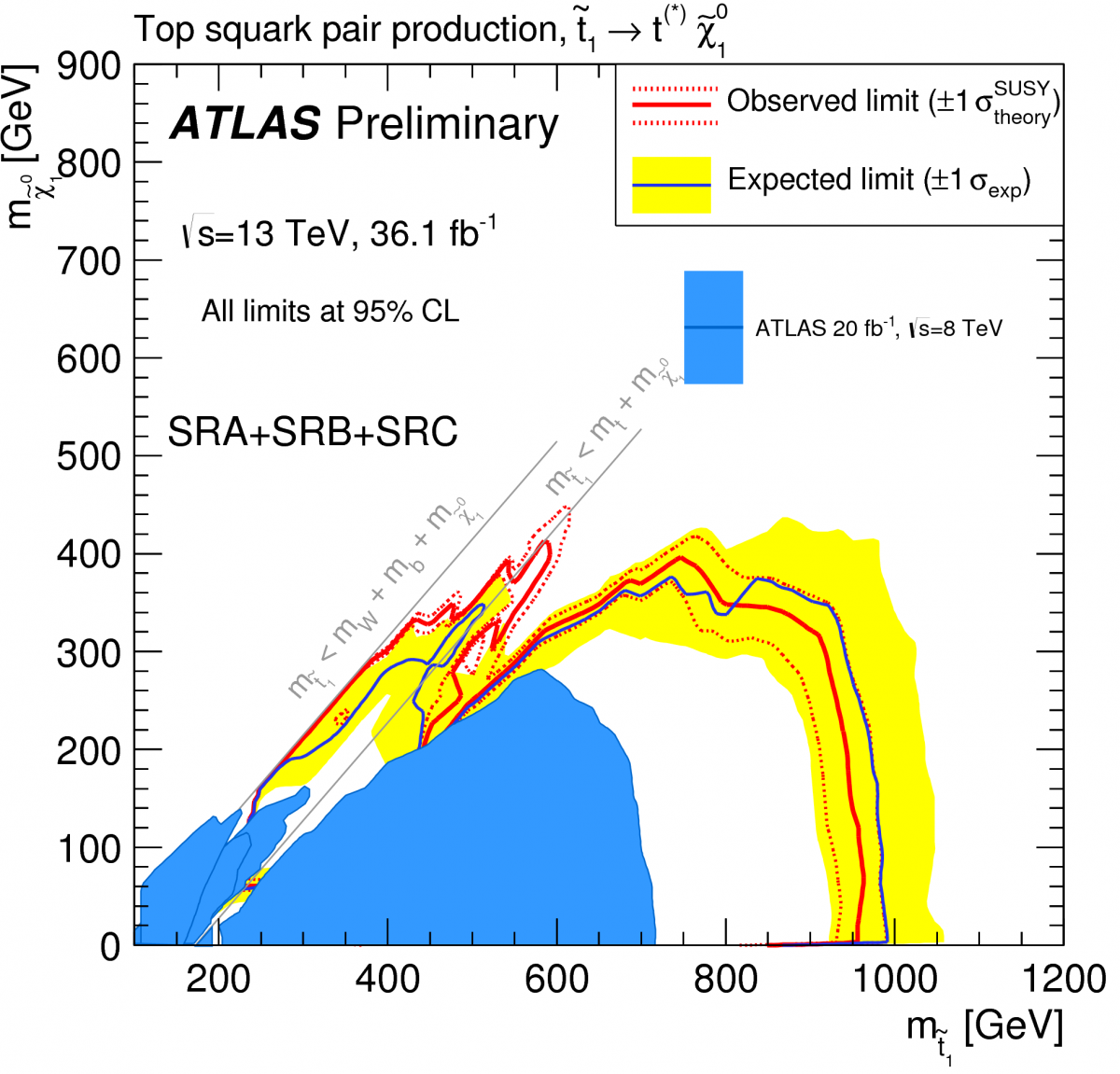Searching for signs of the “stop”
21 March 2017 | By

Look beyond the Standard Model and you’ll find a host of undiscovered particles – at least, that’s what the theory of supersymmetry tells us. Similar to the duality between matter and anti-matter, supersymmetry (or SUSY) describes a duality between fermions (matter-type particles) and bosons (force carriers). The lightest SUSY particle could even be the constituent of dark matter, the elusive matter that keeps galaxies from flying apart.
In new results presented at the Moriond Electroweak conference, the ATLAS Collaboration has sifted through the full available data sample of the LHC’s 13 TeV proton collisions in search of a specific SUSY particle: the heavy partner to the top quark, called the “top squark” or “stop”.
The heaviest particle observed so far, and crucial constituent of the Standard Model, is the top quark, weighing in at 180 times the mass of the proton. Yet its SUSY cousin could easily be anywhere up to 1000 times the mass of the proton… or beyond! Such a heavy particle is challenging to detect, as the heavier the top squark, the less often it would be produced by the LHC. The ATLAS Collaboration looks to filter out these rare signal events from the Standard Model background.
In these new results, ATLAS physicists have searched for pairs of top squarks produced directly by proton–proton collisions in the LHC. We know that each top squark is likely to decay down to its Standard Model counterpart, the top quark, plus a dark matter candidate. Thus ATLAS looks for a pair of top quarks plus some missing “stuff” — since the dark matter candidates leave no trace in our detector, they can only be “noticed” through an energy imbalance in the reconstructed collision event. These results are from the zero-lepton channel, in which each top quark decays via sprays of hadronic particles in the ATLAS detector called “jets”.
The ATLAS result (see figure) shows no compelling evidence for the existence of SUSY. It allows one to draw a contour (red curve) that indicates precisely the sensitivity the analysis had to top squark pair production, and the top squark masses that are ruled out by the search (400–940 GeV for dark matter candidate masses below 160 GeV). There are very few places left for top squarks to hide.
Links:
- Search for a Scalar Partner of the Top Quark in the Jets+ETmiss Final State at √s = 13 TeV with the ATLAS detector (ATLAS-CONF-2017-020)
- Presentation at Moriond Electroweak Conference by Andreas Petridis: "Cornering natural SUSY with 13 TeV"
- See also the full lists of ATLAS Conference Notes and ATLAS Physics Papers



